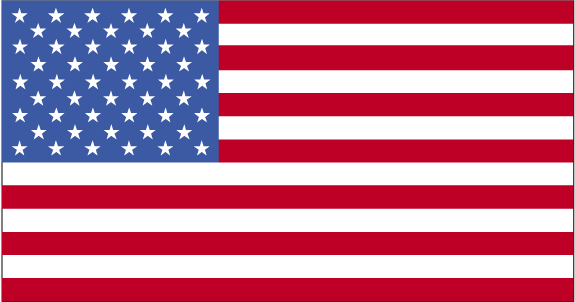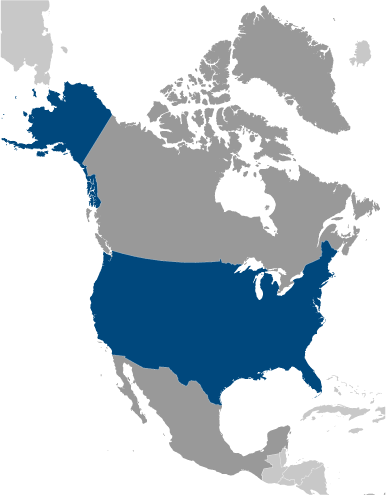|
Country name:
|

|
|
conventional long form: United States of America
conventional short form:
United States
abbreviation:
US or USA
|
|
|
Government type:
|

|
|
Constitution-based federal republic; strong democratic tradition
|
|
|
Capital:
|

|
|
name: Washington, DC
geographic coordinates:
38 53 N, 77 02 W
time difference:
UTC-5 (during Standard Time)
daylight saving time:
+1hr, begins second Sunday in March; ends first Sunday in November
note:
the 50 United States cover six time zones
|
|
|
Administrative divisions:
|

|
|
50 states and 1 district*; Alabama, Alaska, Arizona, Arkansas, California, Colorado, Connecticut, Delaware, District of Columbia*, Florida, Georgia, Hawaii, Idaho, Illinois, Indiana, Iowa, Kansas, Kentucky, Louisiana, Maine, Maryland, Massachusetts, Michigan, Minnesota, Mississippi, Missouri, Montana, Nebraska, Nevada, New Hampshire, New Jersey, New Mexico, New York, North Carolina, North Dakota, Ohio, Oklahoma, Oregon, Pennsylvania, Rhode Island, South Carolina, South Dakota, Tennessee, Texas, Utah, Vermont, Virginia, Washington, West Virginia, Wisconsin, Wyoming
|
|
|
Dependent areas:
|

|
|
American Samoa, Baker Island, Guam, Howland Island, Jarvis Island, Johnston Atoll, Kingman Reef, Midway Islands, Navassa Island, Northern Mariana Islands, Palmyra Atoll, Puerto Rico, Virgin Islands, Wake Island
note:
from 18 July 1947 until 1 October 1994, the US administered the Trust Territory of the Pacific Islands; it entered into a political relationship with all four political entities: the Northern Mariana Islands is a commonwealth in political union with the US (effective 3 November 1986); the Republic of the Marshall Islands signed a Compact of Free Association with the US (effective 21 October 1986); the Federated States of Micronesia signed a Compact of Free Association with the US (effective 3 November 1986); Palau concluded a Compact of Free Association with the US (effective 1 October 1994)
|
|
|
Independence:
|

|
|
4 July 1776 (declared); 3 September 1783 (recognized by Great Britain)
|
|
|
National holiday:
|

|
|
Independence Day, 4 July (1776)
|
|
|
Constitution:
|

|
|
17 September 1787, effective 4 March 1789; amended many times, most recently in 1992
|
|
|
Legal system:
|

|
|
common law system based on English common law at the federal level; state legal systems based on common law except Louisiana, which is based on Napoleonic civil code; judicial review of legislative acts
|
|
|
International law organization participation:
|

|
|
withdrew acceptance of compulsory ICJ jurisdiction in 2005; withdrew acceptance of ICCt jurisdiction in 2002
|
|
|
Suffrage:
|

|
|
18 years of age; universal
|
|
|
Executive branch:
|

|
|
chief of state: President Barack H. OBAMA (since 20 January 2009); Vice President Joseph R. BIDEN (since 20 January 2009); note - the president is both the chief of state and head of government
head of government:
President Barack H. OBAMA (since 20 January 2009); Vice President Joseph R. BIDEN (since 20 January 2009)
cabinet:
Cabinet appointed by the president with Senate approval
(For more information visit the World Leaders website  ) )
elections:
president and vice president elected on the same ticket by a college of representatives who are elected directly from each state; president and vice president serve four-year terms (eligible for a second term); election last held 6 November 2012 (next to be held on 8 November 2016)
election results:
Barack H. OBAMA reelected president; percent of popular vote - Barack H. OBAMA 50.6%, Mitt ROMNEY 47.9%, other 1.5%;
|
|
|
Legislative branch:
|

|
|
bicameral Congress consists of the Senate (100 seats, 2 members elected from each state by popular vote to serve six-year terms; one-third elected every two years) and the House of Representatives (435 seats; members directly elected by popular vote to serve two-year terms)
elections:
Senate - last held on 2 November 2010 (next to be held in November 2012); House of Representatives - last held on 2 November 2010 (next to be held in November 2012)
election results:
Senate - percent of vote by party - NA; seats by party - Democratic Party 51, Republican Party 47, independent 2; House of Representatives - percent of vote by party - NA; seats by party - Democratic Party 192, Republican Party 243
|
|
|
Judicial branch:
|

|
|
Supreme Court (nine justices; nominated by the president and confirmed with the advice and consent of the Senate; appointed to serve for life); United States Courts of Appeal; United States District Courts; State and County Courts
|
|
|
Political parties and leaders:
|

|
|
Democratic Party [Debbie Wasserman SCHULTZ]; Green Party; Libertarian Party [Mark HINKLE]; Republican Party [Reince PRIEBUS]
|
|
|
Political pressure groups and leaders:
|

|
|
environmentalists; business groups; labor unions; churches; ethnic groups; political action committees or PAC; health groups; education groups; civic groups; youth groups; transportation groups; agricultural groups; veterans groups; women's groups; reform lobbies
|
|
|
International organization participation:
|

|
|
ADB (nonregional member), AfDB (nonregional member), ANZUS, APEC, Arctic Council, ARF, ASEAN (dialogue partner), Australia Group, BIS, BSEC (observer), CBSS (observer), CD, CE (observer), CERN (observer), CICA (observer), CP, EAPC, EAS, EBRD, EITI (implementing country), FAO, FATF, G-20, G-5, G-7, G-8, G-10, IADB, IAEA, IBRD, ICAO, ICC (national committees), ICRM, IDA, IEA, IFAD, IFC, IFRCS, IGAD (partners), IHO, ILO, IMF, IMO, IMSO, Interpol, IOC, IOM, ISO, ITSO, ITU, ITUC (NGOs), MIGA, MINUSTAH, MONUSCO, NAFTA, NATO, NEA, NSG, OAS, OECD, OPCW, OSCE, Paris Club, PCA, PIF (partner), SAARC (observer), SELEC (observer), SICA (observer), SPC, UN, UNCTAD, UNESCO, UNHCR, UNITAR, UNMIL, UNMISS, UNRWA, UNSC (permanent), UNTSO, UPU, WCO, WHO, WIPO, WMO, WTO, ZC
|
|
|
Flag description:
|

|
|
13 equal horizontal stripes of red (top and bottom) alternating with white; there is a blue rectangle in the upper hoist-side corner bearing 50 small, white, five-pointed stars arranged in nine offset horizontal rows of six stars (top and bottom) alternating with rows of five stars; the 50 stars represent the 50 states, the 13 stripes represent the 13 original colonies; the blue stands for loyalty, devotion, truth, justice, and friendship; red symbolizes courage, zeal, and fervency, while white denotes purity and rectitude of conduct; commonly referred to by its nickname of Old Glory
note:
the design and colors have been the basis for a number of other flags, including Chile, Liberia, Malaysia, and Puerto Rico
|
|
|
National symbol(s):
|

|
|
bald eagle
|
|
|
National anthem:
|

|
|
name: "The Star-Spangled Banner"
lyrics/music:
Francis Scott KEY/John Stafford SMITH
note:
adopted 1931; during the War of 1812, after witnessing the successful American defense of Fort McHenry in Baltimore following British naval bombardment, Francis Scott KEY wrote the lyrics to what would become the national anthem; the lyrics were set to the tune of "The Anacreontic Song"; only the first verse is sung
|
|
|
|
|





 )
)



